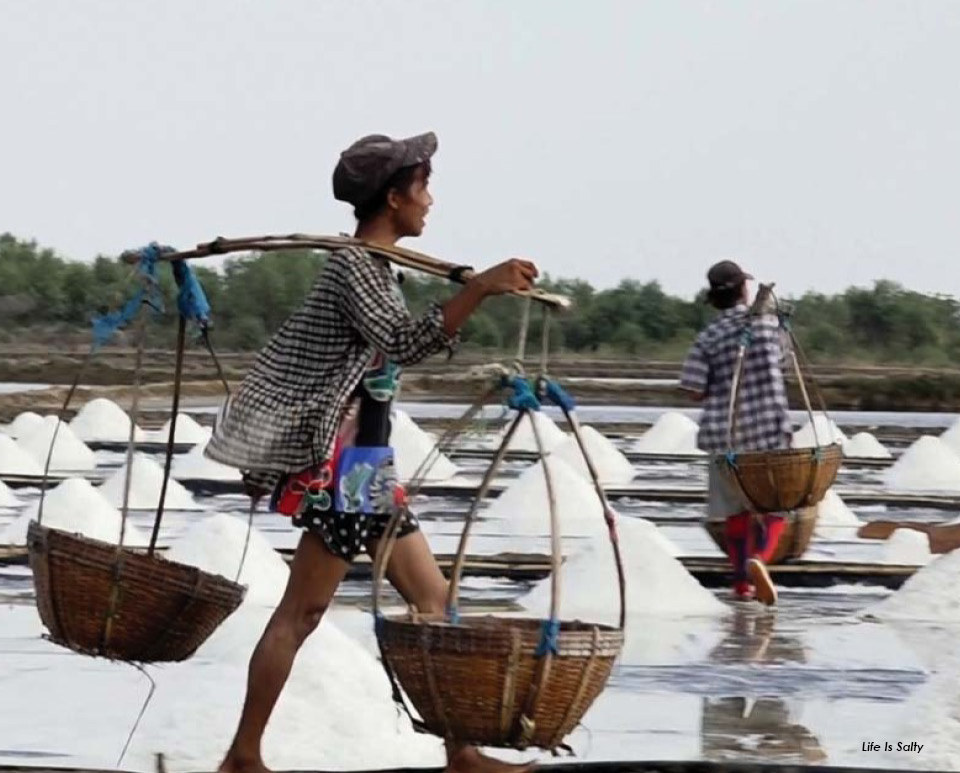
So touching that they are painful. So dangerous that they have to remain hidden. Why Myanmar’s films may bring only limited international awareness of the country’s despair.
It was difficult not to be simultaneously inspired and depressed by the season of short, live-action and animation films from Myanmar presented last month in Vesoul, France, at its enthusiastically attended Festival of Asian Cinema (FICA).
The collection, largely produced by a single non-profit organisation, barely has the chance to get fully up to date and chart much of the past four years of all- out civil war. (The live-action docs are dated 2024, while most of the animation titles were made in the pre-COVID years.) It does not need to.
Province-level armed conflict has been a constant in Myanmar for more than 60 years and the dozen or so films screened at the festival contained multiple first-hand accounts of fighting, displacement, religious intolerance, racial discrimination, domestic violence, sexual abuse and rape as a tool of war and repression.
Once a prosperous and well-educated jewel of the British Empire, Myanmar achieved independence in 1948. But on the (admittedly selective) evidence of these films, which use child-like voices and first-person accounts to describe the desperate and desolate pit that Myanmar has dissolved into since a 1962 military coup, the country is now a backward, agrarian shadow of its former self.
“Life Is Salty” depicts the daily grind (pun intended) of seasonal labourers working outdoors through the winter months harvesting salt. The men and women manually scrape up the stuff, then carry it, pile it and mill tons of it for a few dollars per month. The film compares them to ants. Their teamwork and camaraderie are joyful to watch, but they are expendable. And the concentrated salinity and constant barefoot conditions mean that every season the (human) workers risk debilitating permanent injury.
“Ruby Hunters” shows an extended family that faces imminent death at any moment as they scrape and sift through a muddy cliff in the hope of finding gemstones. The film makes clear that this kind of open cast, freelance mining is i...
So touching that they are painful. So dangerous that they have to remain hidden. Why Myanmar’s films may bring only limited international awareness of the country’s despair.
It was difficult not to be simultaneously inspired and depressed by the season of short, live-action and animation films from Myanmar presented last month in Vesoul, France, at its enthusiastically attended Festival of Asian Cinema (FICA).
The collection, largely produced by a single non-profit organisation, barely has the chance to get fully up to date and chart much of the past four years of all- out civil war. (The live-action docs are dated 2024, while most of the animation titles were made in the pre-COVID years.) It does not need to.
Province-level armed conflict has been a constant in Myanmar for more than 60 years and the dozen or so films screened at the festival contained multiple first-hand accounts of fighting, displacement, religious intolerance, racial discrimination, domestic violence, sexual abuse and rape as a tool of war and repression.
Once a prosperous and well-educated jewel of the British Empire, Myanmar achieved independence in 1948. But on the (admittedly selective) evidence of these films, which use child-like voices and first-person accounts to describe the desperate and desolate pit that Myanmar has dissolved into since a 1962 military coup, the country is now a backward, agrarian shadow of its former self.
“Life Is Salty” depicts the daily grind (pun intended) of seasonal labourers working outdoors through the winter months harvesting salt. The men and women manually scrape up the stuff, then carry it, pile it and mill tons of it for a few dollars per month. The film compares them to ants. Their teamwork and camaraderie are joyful to watch, but they are expendable. And the concentrated salinity and constant barefoot conditions mean that every season the (human) workers risk debilitating permanent injury.
“Ruby Hunters” shows an extended family that faces imminent death at any moment as they scrape and sift through a muddy cliff in the hope of finding gemstones. The film makes clear that this kind of open cast, freelance mining is illegal. The constant threat of landslides is simply too dangerous. But, with a government that now controls less than half the country, enforcement is non- existent, leaving the rural underclass free to take extravagant risks in the hope of striking it lucky.
In the live-action quintet, the country’s leaders are never seen or directly referenced. Instead, they are hinted at through occasional vapour trails and aircraft noise as military jets pass somewhere overhead on missions to or from a bombing run against another section of the domestic population. (Echoes of the 1982 Cannes-winning “Yol” may be unintentional.)
The 14 animation films (mostly of the pen and ink drawing or stop motion varieties) dig deeper still into the horrors of the human condition in a place where education is optional, race and caste represent structural dividers and four religions jostle to be the most fundamentalist and intolerant. Much of Myanmar’s population is too young to have ever known what it is to live in peace and prosperity.
The five-minute cartoons are mostly personal stories which use pen names and animation to disguise the narrators’ true identities. Most seem to adopt a female point of view. Arranged marriages, rape (again) and the traps of borders, bureaucracy, poverty and patriarchy are recurring themes.
Several of the animated films close with a slogan about peace through friendship. But none of the invisible or absent political or religious leaders seem to be offering that.
Indeed, the recent revelations that followed the trafficking of a Chinese actor through Thailand to a Myanmar-based scam factory show how organised crime is flourishing in (and supporting) the current civil war.
I was able to track down the producer and sales agent behind the series and meet up in Berlin shortly afterwards. She spoke on condition of anonymity.
An experienced, articulate and sensitive woman who has spent decades overcoming bureaucracy and ignorance while simultaneously trying to raise funds and teach aspiring filmmakers, the producer was careful not to leave any identity clues, such as names, dates or places connecting the people whose works had been screened in Vesoul.
She explained that her organisation is tolerated by the military-government authorities, its operations are regulated and its film output is subject to censorship. Despite working carefully within the law, self-restraint and a low profile are among its guiding principles.
That seems the opposite of so much of the film industry in the rest of the world, where publicity, hype and marketing drive performance and rights sales. And where celebrity, stardom and notoriety attract millions of dollars for development, production and distribution.
The softly, softly approach also seems to be the opposite of what her organisation needs in the near term – funding for her operations to date has largely come from NGOs, foundations and other cultural agencies, and in the Trumpian era those may be dwindling.
But the strategy is also logical if the longer-term priority is to survive and remain unincarcerated. (Several Myanmar filmmakers have been arrested and jailed since the February 2021 return to martial law.)
The organisation’s low-profile approach throws up other contradictions.
The difficulties of securing distribution, commercial or even festival release mean that earned revenues are close to non-existent. The producer admits that it is difficult to convince her students of the power of the cinematic medium when their films are so rarely seen. A festival screening – or a prize – thus represents a rare incentive.
While Myanmar’s politics seem intractable and hopeless, many of the live- action films’ central characters offer bright personal notes of optimism.
In “Black Lady Sings” a 60-something woman performer is urgently trying to pass on the musical and linguistic traditions of her Mon people (an ethnic group which straddles Myanmar and Thailand). In “Love Like Ours,” a Muslim man and his formerly Buddhist wife have survived Cyclone Nargis and live happily in a shack.
In “Nai Chi,” a woman gamely swings her deformed body between walking frame, wheelchair and drawing board. She is a magnetic personality who tailors for her community and creates sexy fashion fantasies worthy of a Paris catwalk. There’s not a stitch of self-pity here. At one point, the woman says she is grateful for being so severely handicapped as it makes her stand out as an individual.
There must be a cinematic metaphor in there somewhere. For Myanmar’s filmmakers and their stories certainly deserve better than their current invisibility.
- By Patrick Frater






























